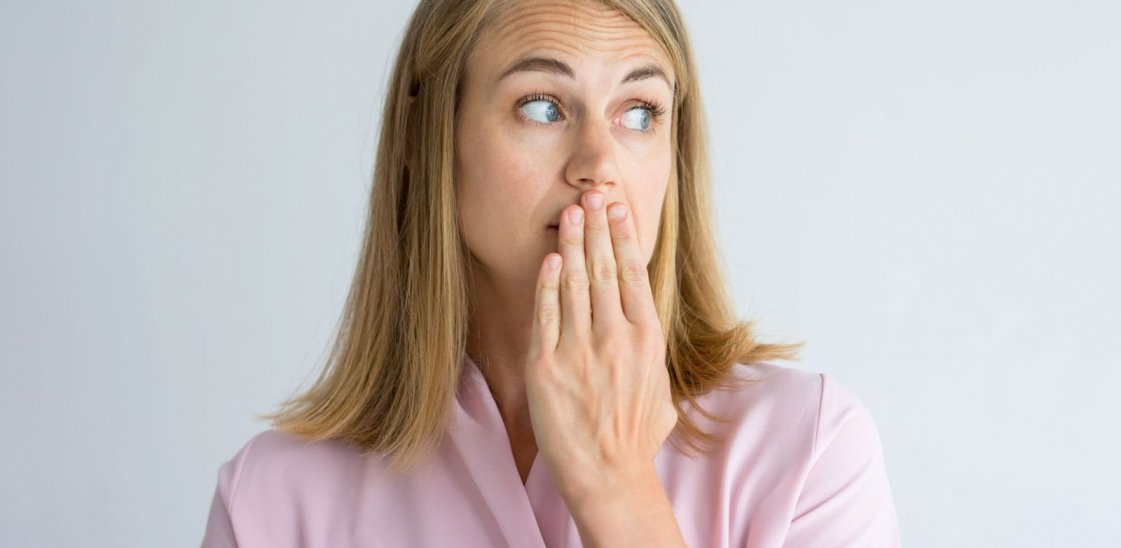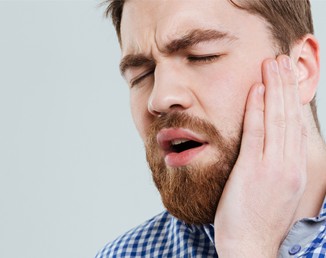
How to eliminate bad breath for good
We all suffer with bad breath from time to time. When you consider the amount of bacteria and food particles in our mouths, it’s not really surprising. Usually, a good hygiene routine is the answer, brushing your teeth at least twice a day and flossing to get into all those little nooks and crannies. But sometimes, bad breath, also known as halitosis, could actually be caused by other things, such as poor diet and smoking.[1]
It can be embarrassing, but we at DenTek have got you covered. Below, you can find out how to tell if you have bad breath, as well as how to get rid of it for good.
How to tell if you have bad breath
It can be really difficult to tell if you have bad breath or not because you simply can’t smell it. Our brains are very clever and will ignore smells that are there all the time because it doesn’t consider them a ‘danger’. While this is usually a good thing, it can mean that testing your own breath is quite difficult. However, there are a couple of tests you can try. It’s not always easy to tell, but these methods should be fool proof.
- Lick your wrist and smell it
Generally, the method that we’re used to seeing involves cupping your hand, breathing into it and then smelling it, but this isn’t particularly effective.
Instead, you could try licking the inside of your wrist, allowing it to dry slightly for a few seconds and then smelling it. If you do have bad breath, you should be able to smell it this way.
- Use a tongue scraper
Generally, bad breath is caused by the bacteria that is present on your tongue. You may be able to determine whether you have bad breath by scraping your tongue gently with a scraper and smelling this afterwards.
- Ask someone
If you don’t mind asking someone to check for you, such as a partner or even the dentist, then do this and see if they can smell it. This is generally the best and most effective way.
How to get rid of bad breath permanently
Once you’ve determined that you’ve got bad breath, you’ll likely be looking for ways to get rid of it. We’ve listed some of the most effective ways below, but it should be noted that if your breath is caused by poor diet or smoking, these issues will need to be addressed – it’s likely that no amount of teeth cleaning will help halitosis that’s a result of frequent smoking or an underlying health condition.[1]
Brush your teeth regularly
Brushing and cleaning your teeth is one of the most effective ways to get rid of the bacteria that causes plaque. Plaque can start to smell, and so if your halitosis is caused by a buildup of this substance, clean your teeth at least twice a day to reduce plaque production. It’s really important to floss, too, so that you can remove all the small food particles that can get stuck and start to break down. This can be done with either floss picks or interdental brushes, whichever you prefer.[1]
Scrape your tongue
As we’ve already mentioned, scraping your tongue is a good way to test if you have bad breath, but it also removes some of the bacteria that could be the cause of your halitosis. Try to introduce tongue cleaning as a regular part of your routine using products such as our Orabrush.[2]
Chew xylitol gum after a meal
Chewing sugar-free gum after a meal can help to increase saliva production. Not only does this help to break down food particles in your mouth that could begin to smell, but the gum gives you minty fresh breath too.[3]
Avoid strong smelling foods
Certain foods can give us worse breath than others, onion and garlic being the worst perpetrators. You should avoid these, as well as very sugary foods or spicy foods if you suffer from halitosis.[1]
Visit a dentist
Sometimes, bad breath can be caused by holes in our teeth that bacteria can get into. If you’ve tried some of the methods above and can’t get rid of it, a dentist may be able to check for any cavities and arrange to have them filled in.[1]
Resources:
[1] https://www.nhs.uk/conditions/bad-breath/
[2] Quirynen, M., Avontroodt, P., Soers, C., Zhao, H., Pauwels, M. and Van Steenberghe, D. (2004), Impact of tongue cleansers on microbial load and taste. Journal of Clinical Periodontology, 31: 506-510. https://doi.org/10.1111/j.0303-6979.2004.00507.x




